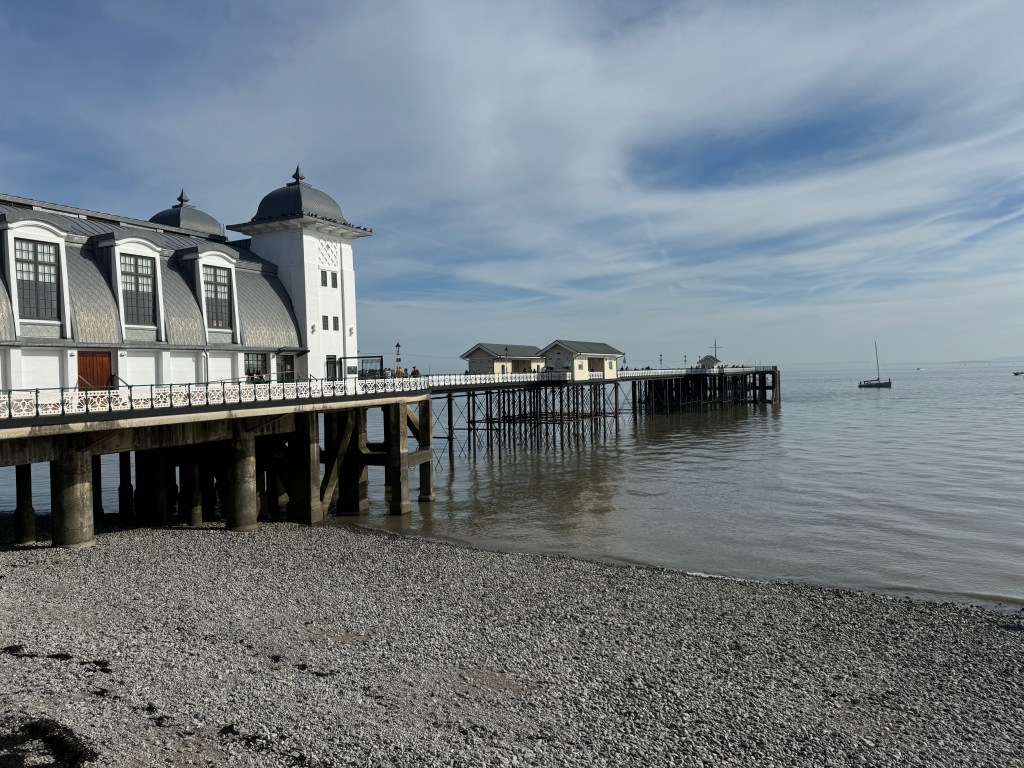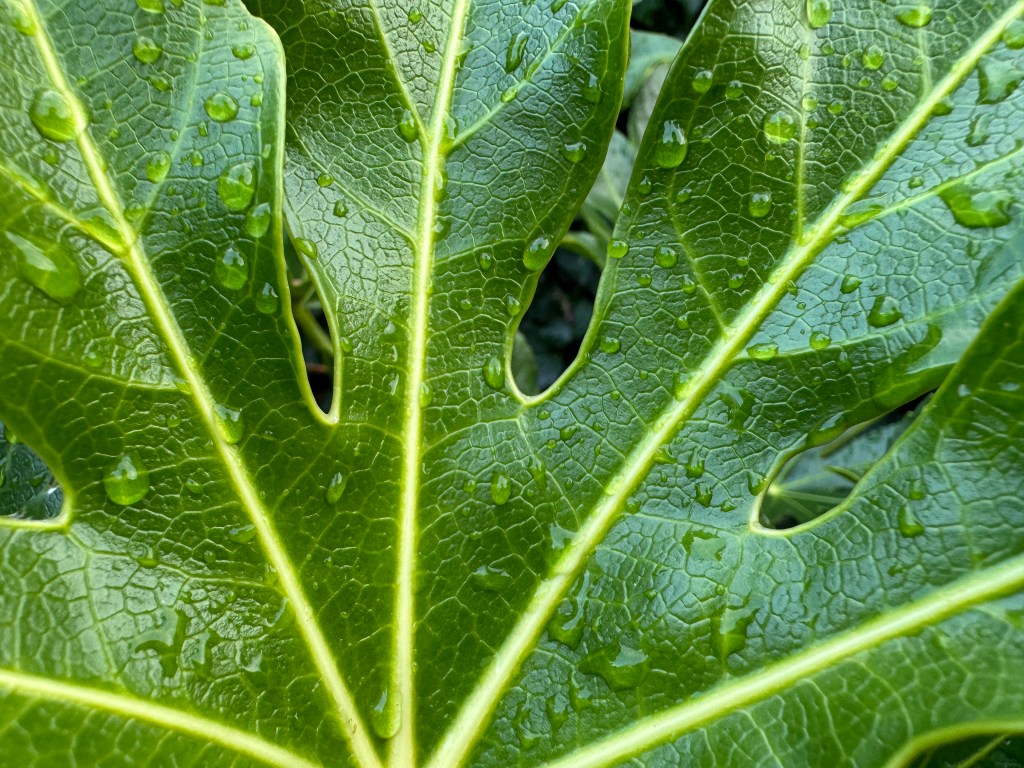Google has garnered an excellent reputation for producing high-performing smartphones for photographers.
Its latest Google Pixel 8 Pro has earned itself a glowing 5 stars in our review, making it one of the best you can currently buy.
However, also vying for our attention is the iPhone 15 Pro Max – which with its 4.5 star review is also an excellent contender for the best you can buy. With its higher score, perhaps the Pixel seems like the obvious choice, but there’s lots of things to consider which may be or more less important to each invidual user.
In this piece, we put them directly against each other to see which is the right one for you – read on to find out more.
Google Pixel 8 Pro vs iPhone 15 Pro Max: Camera specs
Both of these flagship smartphones offer a triple-lens setup, with each also offering a 1x, ultrawide and 5x telephoto option – so on a basic level at least they’re very closely matched.
For the Pixel 8 Pro, we’ve got a main 50MP sensor, with an f/1.68 25mm equivalent lens, which is joined by a 48MP f/1.95 ultrawide lens and a 48MP 5x telephoto 113mm equivalent f/2.8 telephoto lens.
Both the iPhone 15 Pro Max and the Pixel 8 Pro have three lenses. Credit: Amy Davies.
By comparison, we have just one high-resolution sensor on the iPhone – the main 1x camera has 48MP, with a 24mm equivalent f/1.78 lens. It is joined by a 12MP f/2.2 ultrawide and a 5x telephoto 120mm f/2.8 equivalent.
Both models have digital zoom options, with the iPhone 15 Pro Max going up to 25x and the Pixel 8 Pro going a little further with 30x.
For the selfie cameras, the iPhone 15 Pro Max has a 12MP device with AF and an f/1.9 lens, whereas the Pixel 8 Pro has a 10.5MP device with AF and an f/2.2 lens.
With the Pixel 8 Pro, you get 4K video recording at 24/30/60fps, as well as Full HD and various other video features. The iPhone 15 Pro Max is very similar, also with 4K at 24/30/60fps and a range of other video features.
Looking purely at the specifications on paper, the Pixel 8 Pro is probably the winner here. While both have the same focal lengths and roughly the same video specifications, thanks to its three high-resolution sensors the Pixel 8 Pro is a little better – we’ll see if that extra resolution makes a big difference in our real-world head-to-head examples soon though.
Google Pixel 8 Pro vs iPhone 15 Pro Max: Camera apps and shooting modes
Both iPhone and Pixel have long had a reputation of having very simple and easy-to-use native camera apps, but it’s also true to say that in recent years, more and more features have been added to the native apps to give more control.
For the first time in a Pixel model, the Pixel 8 Pro introduces a “Pro” mode which gives you access to a range of manual shooting parameters, such as shutter speed, white balance, ISO and even things like focus peaking for manual focusing. This is not something you have with the iPhone 15 Pro, though there is some options to change things like exposure compensation. Both phones allow you to record in raw format from the main/standard shooting mode.
The Pixel 8 Pro’s native camera app has a lot more shooting modes than the iPhone 15 Pro Max. Credit: Amy Davies.
There are other shooting modes available for both the iPhone and the Pixel. Both have a Portrait mode, with the iPhone having the additional advantage of automatic portrait recognition which detects humans, cats and dogs without having to select as such. Both also have a low light mode, called Night for the iPhone and Night Sight for the Pixel. Here, it’s the Pixel which is better as it is manually selectable, and also includes advanced options for subjects such as astrophotography.
Both models have a macro mode which works by switching to the ultrawide lens, and both also have options to shoot in high-resolution (though not for options such as macro, portrait and low light).
The Pixel also includes other interesting modes that you simply don’t have with the iPhone. This includes Action Pan and Long Exposure for making creative blur effects.
For video, we have standard shooting modes for both models, as well as options such as Cinematic, Action and ProRes for the iPhone, with similar equivalent options from the Pixel being Blur and Pan for the first two – advanced content creators might be more drawn to the ProRes shooting mode for the iPhone, but the Pixel arguably has more “fun options”.
It’s worth mentioning in-phone editing options at this point too. Both offer quite a comprehensive amount, but, the Pixel series has become known for its computational wizardry, and as such it has a whole host of additional editing options such as Best Take, which allows you to swap out faces in group shots, and Magic Editor, which means you can move and erase objects within a frame at will.
The winner here simply has to be the Pixel 8 Pro, as it offers a great deal more than the iPhone 15 Pro, particularly in terms of things like the selectable night mode, an advanced Pro mode, AI-editing and shooting options and more.
Google Pixel 8 Pro vs iPhone 15 Pro Max: General image quality
It’s fair to say that both of these models take great photos in a wide range of different conditions, but as we generally find with most smartphones, they do best in good light.
Both record a good degree of detail, both have well-balanced exposures, and both have good colours. However, it is possible to draw out some clear differences if you look closely.
The Pixel colours tend to be better – being vibrant without overly saturated, but generally a bit brighter than the iPhone. The iPhone can also have a tendency towards greener tones, too. There’s more detail. Where light is not super bright, but not very low, the Pixel 8 Pro seems to produce smoother images which are pleasing to look at without losing too much detail – this is particularly true for images shot with the ultrawide lens, which has a much higher resolution than the iPhone 15 Pro Max.

In this shot with the iPhone 15 Pro Max – the colours are a bit flatter/darker and have some greener tones. Photo credit: Amy Davies.
The same image shot with the Pixel 8 Pro – colours are warm yet realistic. Photo credit: Amy Davies.
Looking at pictures shot under artificial light, the Pixel 8 Pro produces images which look more “correct” – in our examples here, the iPhone 15 Pro Max is much yellower. However, it’s worth noting that the light in real life was a lot yellower than the Pixel is showing – perhaps the processing here has determined to “correct” reality to present a more pleasing shot. Where light is artificial but less yellow, both phones put in quite similar performances.

An image shot under artificial light with the iPhone 15 Pro Max. Photo credit: Amy Davies.
The same scene shot with the Pixel 8 Pro – it looks better, but it’s less realistic than the actual scene. Photo credit: Amy Davies.
Overall, both these models put in a great performance when looking at “general” image quality – but it’s easier to compare specific scenarios, which we’ll do now.
Google Pixel 8 Pro vs iPhone 15 Pro Max: Zoom
Both the Pixel 8 Pro and the iPhone 15 Pro Max have a 5x zoom lens, both with an f/2.8 maximum aperture – so we might expect them to put in reasonably similar performances. The big difference is resolution, with the Pixel 8 Pro’s 5x lens having a 48MP resolution, vs the 12 for the iPhone 15 Pro.

An image shot at 5x zoom with the iPhone 15 Pro Max. Photo credit: Amy Davies.
The same scene shot with the 5x zoom lens with the Pixel 8 Pro. Photo credit: Amy Davies.
However, in real-world usage in good light, we found both produce similar levels of details, and both getting you about the same amount of closeness to your subject.

iPhone 15 Pro Max 10x zoom. Click here to view the 25x zoom. Photos Amy Davies.
10x zoom with the Google Pixel 8 Pro. Click here to view the 30x zoom. Photos Amy Davies.
When looking at digital zoom, this reveals that both put in a good performance – with the Pixel 8 Pro looking a little more natural – and the iPhone giving sharper images in some parts of the image.
You can digitally zoom to 30x with the Pixel 8 Pro, or 25x with the iPhone 15 Pro Max. Results are reasonable, but neither are what you’ll likely want to consider for anything other than a record shot.
This situation is quite tied – both the 5x lenses put in a reasonably similar performance. We might find more differences in low light…
Google Pixel 8 Pro vs iPhone 15 Pro Max: Low Light
You get excellent low light performance from both the iPhone and the Pixel – with both having good night modes you can rely on.

A low-light shot with Night mode with the iPhone 15 Pro Max’s 1x lens. Photo credit: Amy Davies.
The same scene shot with the Pixel 8 Pro, also using the 1x lens. Photo credit: Amy Davies.
With the 1x lens, we get a fairly similar result, though there’s a little more detail in the Pixel 8 Pro’s shadow areas than the iPhone 15 Pro Max. The difference is a bit more marked with the ultrawide angle lenses – both are very good, but there’s a noticeable amount more that can be seen in shadow areas from the Pixel 8 Pro.

A low light image shot with the iPhone 15 Pro Max’s ultrawide lens. Photo credit: Amy Davies.
The same scene shot with the Pixel 8 Pro – there’s much more detail in the shadow areas. Photo credit: Amy Davies.
The same is true for the 5x lens, with the Pixel 8 Pro bringing out more detail at this focal length. Digital zoom can be used with both for Night modes. Here, you’ll get fairly usable results from the Pixel 8 Pro with 10x digital zoom, whereas the iPhone’s is not very good at all. The maximum (25x iPhone, 30x Pixel) is not overly usable from either device, but the Pixel’s is marginally better.

An image shot with the 5x lens in Night mode with the iPhone 15 Pro Max. Photo credit: Amy Davies.
The same scene shot with the Pixel 8 Pro – we can see more detail and a more pleasing overall result. Photo credit: Amy Davies.
Here again it’s the Pixel which is the winner, putting in a better performance across all of its lenses. It’s also worth remembering that the Pixel 8 Pro has other Night photography options, particularly astrophotography which also help to give it an edge over the iPhone.
Google Pixel 8 Pro vs iPhone 15 Pro Max: Macro
With both of these phones, macro mode will engage as soon as you get particularly close to an object. The phone will automatically switch to the ultrawide lens, then crop to maintain the angle of view of the 1x lens. You can switch off macro focusing if you don’t think it’s needed.
The main difference between the two is that the Pixel 8 Pro’s ultrawide lens is 48MP f/2.0, whereas the iPhone 15 Pro Max’s ultrawide is 12MP f/2.2. This has a couple of knock-on effects. It means that the default output resolution from the iPhone drops down to 12MP, and you can’t shoot in higher resolution. By contrast, you can leave high resolution shooting on with the Pixel 8 Pro and also capture macro shots.

A macro shot with the iPhone 15 Pro Max. Photo credit: Amy Davies.
A macro shot with the Pixel 8 Pro. Photo credit: Amy Davies.
Additionally, the slightly brighter lens of the Pixel 8 Pro appears to make some difference when light isn’t super bright – which can often be the case when you’re getting very close to a subject and blocking out the light with either the device or your body.
When we look at images shot in bright light, there’s a good amount of detail resolved by both devices – so they’re very closely matched, and both put in an impressive performance. However, for indoor macro, the Pixel 8 produces crisper and cleaner images.
Here again, the Pixel 8 Pro comes out just a little bit better – there’s not a huge amount in it, but if you’re regularly shooting close-ups, it might be worth thinking about.
Google Pixel 8 Pro vs iPhone 15 Pro Max: Portraits
Although both of these phones have a dedicated portrait mode, only the iPhone has an automatic portrait recognition option. That means you don’t need to turn on portrait mode if you present it with a subject it recognises for such purposes – a human, a dog or a cat. It’s perhaps somewhat surprising that Google doesn’t have this considering its AI prowess, but there we go.
With the iPhone 15 Pro Max, you can create portraits at 1x, 2x or 5x focal lengths, but with the Pixel 8 Pro, you’re limited to 1.5x or 2x – which is a bit of a shame for anyone who wants to create “headshot” type images.

An image shot with the iPhone 15 Pro Max Portrait mode at 2x. Photo credit: Amy Davies.
An image shot with the Pixel 8 Pro Portrait Mode at 2x. Photo credit: Amy Davies.
The results between the two phones at the 1x and 2x option are very similar, with the iPhone probably giving a slightly more natural drop off than the Pixel if you look really closely. The iPhone also produces more vibrant colours in this scenario too.

With the iPhone 15 Pro Max, you can also shoot Portraits at 5x – something which isn’t available on the Pixel 8 Pro. Photo credit: Amy Davies.
You can also mix Night and Portrait modes with both phones – again these both put in fairly similar results, with the 1x (iPhone) or 1.5x (Pixel) giving the best results.
Both the Pixel 8 Pro and iPhone 15 Pro have good selfie cameras, with both offering autofocus, and both having the option to create shallow depth of field effects. They both produce good results, but the shallow depth of field effect with the iPhone is again more natural and less obvious.

A selfie shot with the iPhone 15 Pro Max in “Portrait”. Photo credit: Amy Davies.
The Pixel 8 Pro selfie mixed with Portrait mode has a more obvious drop off from subject to background. Photo credit: Amy Davies.
Although both phones put in a good performance, this is probably the only situation where the iPhone outdoes the Pixel for a number of reasons. The results are slightly better from the iPhone, but it’s also easier to get portraits, with its automatic recognition and greater diversity of focal length options, too.
Google Pixel 8 Pro vs iPhone 15 Pro Max: Video
Both models offer very good video specifications – you get 4K at 60fps with either model, as well as a range of other resolutions and frame rates.
The results from either are great – with good, vibrant colours and plenty of detail. Advanced content creators may feel they need the ProRes offering of the iPhone 15 Pro Max, but the Pixel 8 Pro offers plenty for most ordinary users.
There’s also extra video modes which help you to produce interesting results too. Neither has a “pro” video shooting mode, and both offer the same focal lengths too.
Overall, it’s a fairly neat tie between the two for video – with perhaps the iPhone 15 Pro Max edging it just slightly if you need that additional “ProRes” option.
Google Pixel 8 Pro vs iPhone 15 Pro Max: Screen and Design
Both the Pixel 8 Pro and the iPhone 15 Pro Max have a 6.7” screen, putting them into the “large” category for smartphones. Other flagships which are larger include the 6.8” Samsung Galaxy S23 Ultra., the 6.81″ Honor Magic5 Pro, and 6.8″ Oppo Find X6 Pro.
The Pixel 8 Pro has a SuperActua LTPO OLED 1344 x 2992 pixel screen at 489ppi, with a refresh rate of 120Hz and a maximum brightness of 2400nits. It also uses Corning Gorilla Glass Victus 2 for toughness, and is IP68 water resistant rated.
Meanwhile, the iPhone 15 Pro Max’s screen is a Super Retina XD4 OLED 1290 x 2796 pixel screen at 460ppi, also with a refresh rate of 120Hz and a slightly lower maximum brightness of 2000nits. It uses a Ceramic Shield for toughness (which Apple claims is the “toughest on the market”, so in theory it’s tougher than the Victus 2), and it is also IP68 water resistant.
The Pixel 8 Pro has slightly rounded corners – though not quite as rounded as the iPhone 15 Pro. Credit: Amy Davies.
Aesthetically speaking, with its rounded corners it seems like the Pixel has gone towards more like an iPhone-style design for the 8 Pro. The 7 Pro was closer in appearance to the Samsung S23 Ultra model. The backs of the phones are quite different however – with the iPhone’s lenses clustered together into a triangle shape, and the Pixel 8 Pro’s spread out in a “visor-like” design.
Arguably the Pixel is also available in more interesting colours – with the blue variant we’ve been using far more interesting than the more muted “titanium” options the iPhone provides.
Picking a winner is difficult, since design preferences may be individual, and the screens are relatively closely matched in terms of physical specifications. The Pixel is slightly higher in resolution and brightness however, so perhaps it should take the crown.
Google Pixel 8 Pro vs iPhone 15 Pro Max: Battery life, charging and storage
One of the key benefits of larger smartphones is that they also boast a longer battery life.
The Pixel 8 Pro has a 5050 mAh battery, which is quoted as having a “24 hour” battery life – this refers to if the phone was left to stream a video constantly and not do anything else, so it’s not particularly relevant to real-world usage.
However, it does allow us to compare it against the iPhone 15 Pro Max’s battery, which has a quoted battery life for the same situation as “29 hours”. We don’t get told the mAh rating for iPhones, but we can perhaps assume it’s ever slightly larger – or that the phone is more efficient.
Either way, we’ve found that in real-world usage, both phones easily last a full normal day (wake up to bedtime) in most normal circumstances. You will likely find you get less if you take lots of photos and videos, or do something particularly power intensive.
The Pixel 8 Pro and iPhone 15 Pro Max have similar battery lives. Photo Amy Davies
Neither of the smartphones comes provided with a charging brick – which is pretty common for most modern flagships. Both use USB-C connectivity, something which is new for iPhone. Both also have wireless charging and fast charging capability – but you’ll need to invest in separate chargers to access this functionality.
Storage-wise, the Pixel 8 Pro has a minimum capacity of 128GB, compared to the minimum capacity of 256GB for the iPhone 15 Pro Max. The good news here is that that means that you can pick up the Pixel 8 Pro for a cheaper price because of that. You can also buy the 8 Pro in 256GB or 512GB variants, while the iPhone 15 Pro Max has 512GB and 1TB options.
Again, it’s fairly hard to pick an outright winner in this category. Both seem to have fairly similar battery lives and charging options. The storage options have both their negative and positive points – if you want a massive amount then the iPhone is the only option, but if you’re happy with a smaller amount, you can save money with the Pixel. Which leads us to…
Google Pixel 8 Pro vs iPhone 15 Pro Max: Price
Pretty much all flagship smartphones are expensive, and these two are no exception.
That said, the Pixel series has become well-known and regarded for its lower price, comparatively speaking at least.
The 8 Pro is the most expensive Pixel to date, coming in at $999/£999 for the cheapest 128GB model, going up to $1059/£1059 for the 256GB option and $1179/£1179 for the largest 512GB variant.
It still compares well against the iPhone 15 Pro Max, which will set you back a minimum of $1199/£1199 (256GB) and rises up to $1399/£1399 for the 512GB and $1599/£1599 for the maximum 1TB option.
That makes the iPhone $200/£200 more expensive at the cheapest available price, or $140/£140 if comparing more fairly like for like (the two 256GB options). What’s more, we’re already seeing price reductions on the Pixel 8 Pro – and it’s likely to drop in price a lot quicker than the Apple model too.
The Pixel 8 Pro is a fair bit cheaper than the iPhone 15 Pro Max. Photo Amy Davies
As they’re both the same age, finding them on second-hand sites is probably going to be tricky for the moment, but again, in a few months’ time – the Pixel 8 Pro is likely to again be the cheaper option. You could also argue that the iPhone is likely to better hold its value if you like to trade up regularly, though.
Clearly, the “winner” here has to be the Pixel 8 Pro, which is available at a great price for the amount of features it offers.
Google Pixel 8 Pro vs iPhone 15 Pro Max: Verdict
It’s generally quite hard to choose a winner between two high-end smartphones such as the Pixel 8 Pro and the iPhone 15 Pro Max – with both putting in excellent performances across a range of different situations.
However, it’s clear from our tests that in the majority of cases, the Pixel 8 Pro performs just that little bit better. A notable exception is with Portraits – so you might want to think about what it is you’re intending to a shoot a lot of. That’s not to say the Pixel 8 Pro is bad for portraits – far from it – but you do get a little bit of extra flexibility with the iPhone 15 Pro Max.
Otherwise, for general image quality, macro and low light shooting, the Pixel 8 Pro just slightly has the edge over its iPhone rival. Video quality is great from both, so that may come down to whether or not you need the advanced ProRes shooting of the iPhone.
In terms of aesthetics and design, with both having the same screen size, which you prefer looks wise comes down to personal preference. Both look pretty good in my view, though.
The Pixel 8 Pro and the iPhone 15 Pro Max are fairly evenly matched in lots of ways – which is your favourite? Photo: Amy Davies
Of course, operating system and usability will be a big part of it for a lot of users. If you’re wedded to Apple because you have other Apple products, then it’s likely to be hard to shift you towards Android, but if you’re happy to be flexible, then the Pixel is a great choice. Similarly, you might also be more interested in Android in the first place, of course.
Now price – that’s a big factor for consideration. There’s not really getting around the fact that the iPhone will set you back more – not least because you have to buy more storage for the iPhone 15 Pro Max than you’re required to for the Pixel 8 Pro. We’re also already seeing price drops for the Pixel phone, so it’s likely to come down further in due course too. That said, if you buy an iPhone, you’ll likely get more back for it once you come to sell it – so that’s something to think about too.
Overall, these two models are very evenly matched, with the choice potentially coming down to personal preference. If we have to pick one, then due to overall performance and lower cost, then the Pixel 8 Pro just about swings it, but both are great.
Which would you choose?
Related articles:
Follow AP on Facebook, Twitter, Instagram, YouTube and TikTok.






